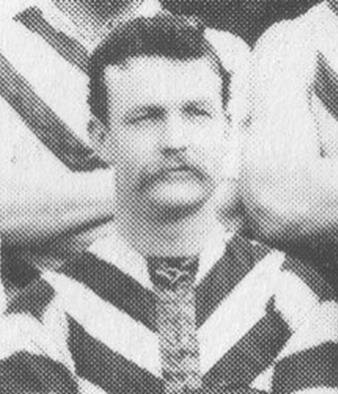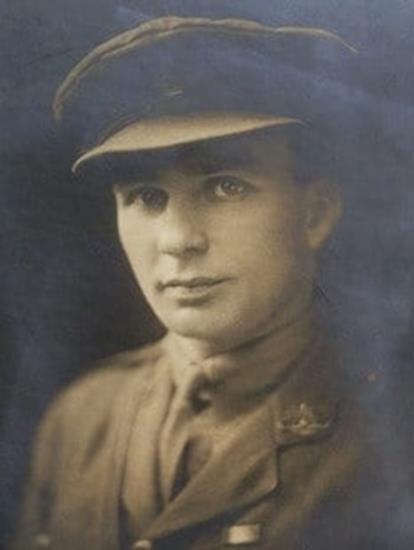Sporting Greats
Clem Hill
Clem Hill was an international cricketer and considered one of Australia’s most famous left-handed batsman. A spectacular and popular player, he started his cricketing career with the Prince Alfred College team, his highest score there being 360 runs.
He played his first First-class cricket match for South Australia at the age of 16. In 1896, at the age of 19, he was selected as part of the Australian team to tour England, where he played his first Test match. He played in a total of 49 Test matches, captaining Australia in the 1910-1911 and 1911-1912 series.
He was a prolific run-scorer, accumulating a total of 3,412 runs in Australian Test matches, and 17,213 runs in First-class teams.
His highest score was 365 not out vs New South Wales at the Adelaide Oval in 1900.
Despite his popularity with the crowds, Hill had a strained relationship with the Australian Cricket Authorities due to unhappiness with contract terms. His cricket career ended after a disagreement with administrator Peter McAlister in 1912.
Following his retirement from cricket he devoted his attention to racing and became a stipendiary steward to the South Australian Jockey Club, and later a handicapper.
On 18 May, 1945, Hill fell whilst trying to board a tram at the corner of Queen and Collins Streets in Melbourne. He was thrown to ground, suffering serious head injuries. He was admitted to hospital, and responded well to treatment, but developed a serious heart condition following the incident. He passed away on 5 September 1945, the coroner citing “chronic valvular disease of the heart” as the cause of death.
His remains were returned to Adelaide, and he was buried on 8 September 1945 in Plot 4150, Path 29 North. He was 68 years of age.
Hill was inducted into the Australian Cricket Hall of Fame in 2005, and a memorial statue of him was erected at the main entrance of Adelaide Oval in December 2017.
Haydn Bunton (Snr.)
Haydn Bunton is regarded by some historians as the one of the greatest ever football players. He was born and raised in Albury, NSW, starting his football career with the Albury Football Club. His skill attracted the attention of the VFL clubs, who all vied to sign him up.
He joined the Fitzroy Football club in 1931, after playing district cricket for Fitzroy during the 1930-1931 season. He achieved instant success, winning the Brownlow Medal in consecutive years, 1931 and 1932. He was appointed Captain of Fitzroy in 1932. He won the Brownlow Medal again in 1935, after being runner-up in 1934.
Bunton moved to Western Australia in 1938, taking the position of Captain/Coach for Subiaco. While in this position he won the Sandover Medal three times, in 1938, 1939 and 1941.
He served during the Second World War, enlisting in February 1943. After his discharge in 1945, he played one season with the Port Adelaide Football Club, then went on to be a field umpire before coaching North Adelaide.
He was made an inaugural legend in the Australian Football Hall of Fame in 1996. In 2005 a bronze statue of him was erected outside the MCG in Melbourne.
Bunton was critically injured when his car crashed into gum trees eleven miles north of Gawler, South Australia on Thursday September 1, 1955. He was alone in the car, and was treated at the scene for severe head injuries, a punctured lung, a fractured collarbone, fractured ribs and shock.
The following Saturday morning he rallied slightly and encouraged his son Haydn Jr. to play in an important match for North Adelaide that day. Bunton died on the night of Monday 5 September at the Royal Adelaide Hospital. The cause of the accident was never identified.
Haydn Bunton was buried on 7 September, 1959 in Plot 8931, Path 50 South, together with his wife Lydia, who had passed away less than a year earlier. No headstone marked his grave until 2015, when a brass plaque was erected.
John Cole (Dinny) Reedman
Widely regarded as the most remarkable South Australian sportsman to emerge in the first 70 or 80 years of the state’s history, Dinny Reedman captained the state at both football and cricket, played Test Cricket for Australia, and was a champion long distance swimmer.
His football career spanned 23 years with four clubs, during which time he could only recall missing one game.
A ruckman of great ability and toughness and a skilled defender, 'Dinny' Reedman played for South Adelaide from 1889 to 1898, captaining them over those same 10 years to five premierships. He was forced to leave South Adelaide under the Electorate System which came into effect in 1899, and went on to captain North Adelaide for 5 years to 2 premierships, and later coached West Adelaide from bottom to top and to Champions of Australia.
Widely respected by his contemporaries for his leadership abilities, Dinny is credited with introducing the concept of the loose man which has become so much a part of today's game.
John Cole Reedman died on 29 March, 1924, and is buried in Plot 5622, Path 28 South.
Reedman was one of the original inductees into the AFL Hall of Fame in 1996.
A commemorative drinking fountain to Reedman is situated in the park surrounding the Adelaide Oval.
Norman Claxton
An all-round sportsman, Norman Claxton was a prominent figure in cricket, football, baseball and cycling.
He played 39 cricket matches for SA with a total run score of 2,090 at an average of 29.43. He was a player in the North Adelaide Football Club teams that won the SANFL in 1900 and 1902. The Claxton Shield for the champion baseball team in Australia was donated by Claxton in 1934.
Claxton died in 1951 at the age of 74. He is buried in Plot 6940, Path 44 North.
He was inducted into the Australian Baseball Hall of Fame in 2005.
William Ashley Magarey
William Magarey, born on 30 January 1868, was educated at St Peter’s College, and graduated from the University of Adelaide in 1884 to become a practising lawyer. He was also a first-class South Australian cricketer.
Magarey was appointed the South Australian Football Association's inaugural chairman in 1897. In an attempt to wipe out much of the rough play from the league, he instituted an award which would be given to the fairest and most brilliant player each season. From the first Magarey Medal in 1898, he personally presented the award to the winners until his death in 1929.
William Magarey died at his residence, “Zephyrside”, in North Adelaide on 18 October 1929 at the age of 61. He is buried in Plot 2278, Path 8 North.
John Francis Murray “Pug” Bannigan
After making his SANFL debut for Sturt in 1908, by 1914 Bannigan was considered one of the league’s great rovers.
His footballing career came to a halt when he enlisted in August 1914, serving at Gallipoli and France before being taken prisoner in 1916. He spent the remainder of the war as a POW, receiving a Meritorious Service Medal on his release.
He made a spectacular and successful return to his football career in 1920.
Bannigan died in 1947, aged 55 years. He is buried in Plot 1754, Path 0 North.







